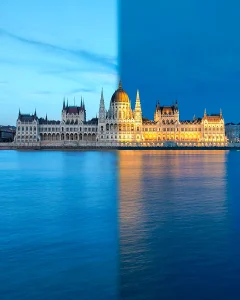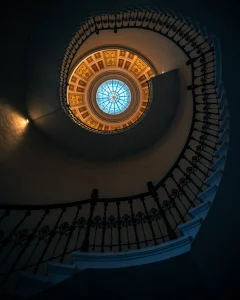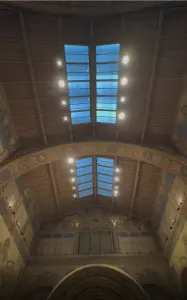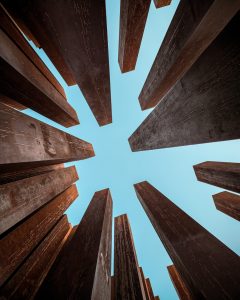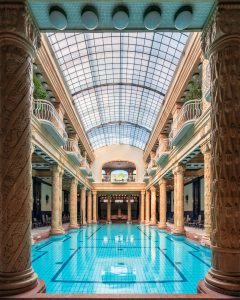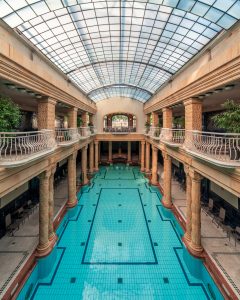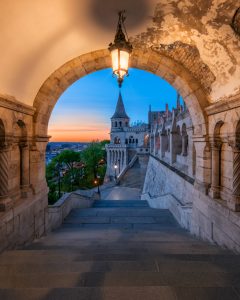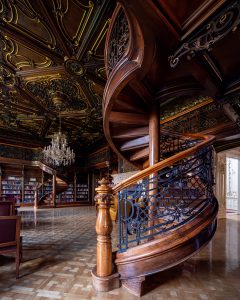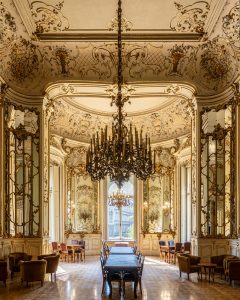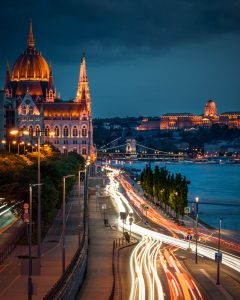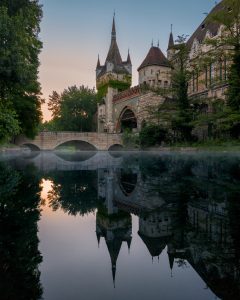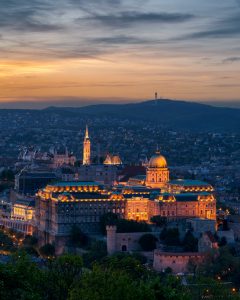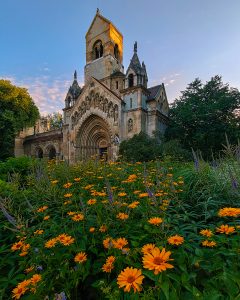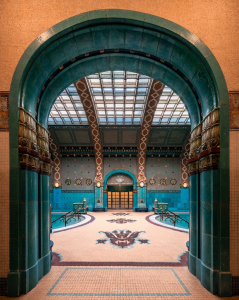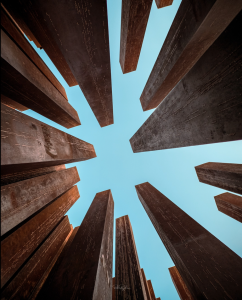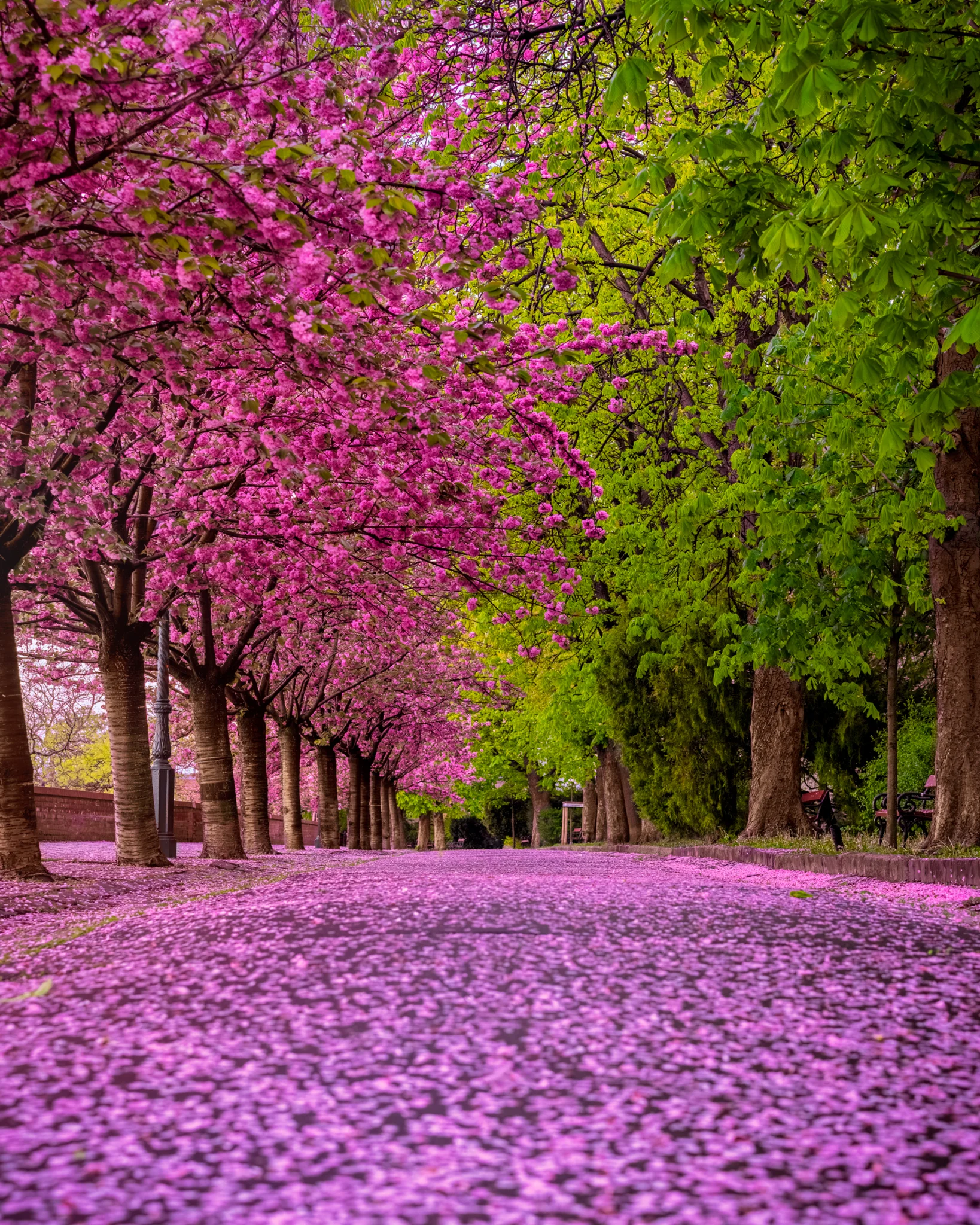
Cherry Blossoms
The great sensation of spring in Budapest is the row of trees adorned in pink clouds along Tóth Árpád Promenade. During the day, crowds flock to admire the Japanese cherry blossoms, so it's worth arriving earlier, at sunrise, to the location. I captured the stunning row of trees after a night of rain. The sight of the pink flowers fallen and soaked from the tree provided a spectacular foreground for the photo, with fresh green, lush chestnuts on one side and the pink Japanese cherry blossoms forming a tunnel on the other.
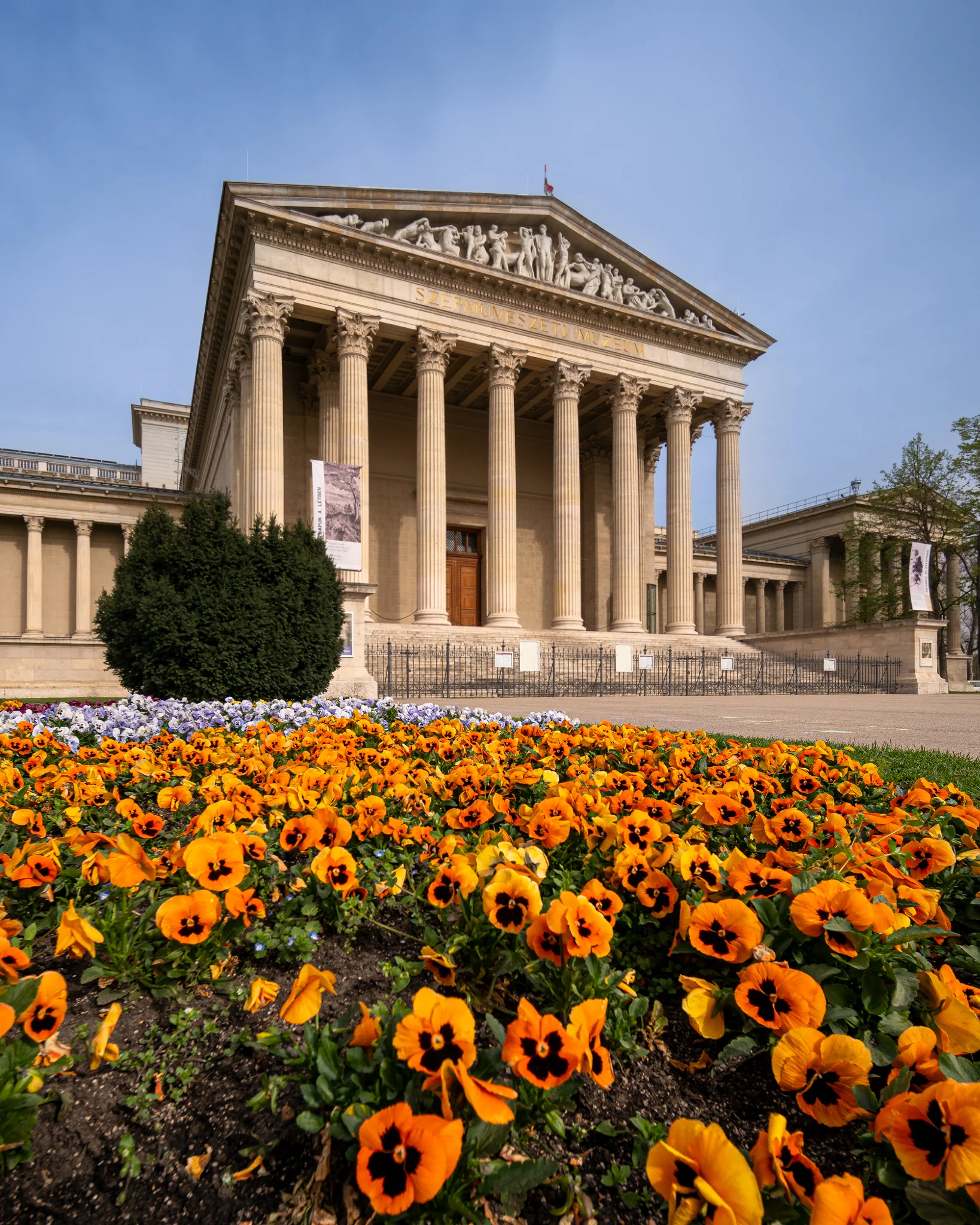
Fine Arts
The Museum of Fine Arts is part of the Heroes' Square architectural complex, belonging to Budapest's UNESCO World Heritage sites. The flowerbed in front of the museum, built in the neorenaissance and neoclassical styles between 1900 and 1906, provides an ideal foreground for the building, especially if we photograph from a lower angle (e.g., kneeling down). It's worth exploring inside as well; the impressive halls and spaces offer great photographic subjects (see Photo 7).
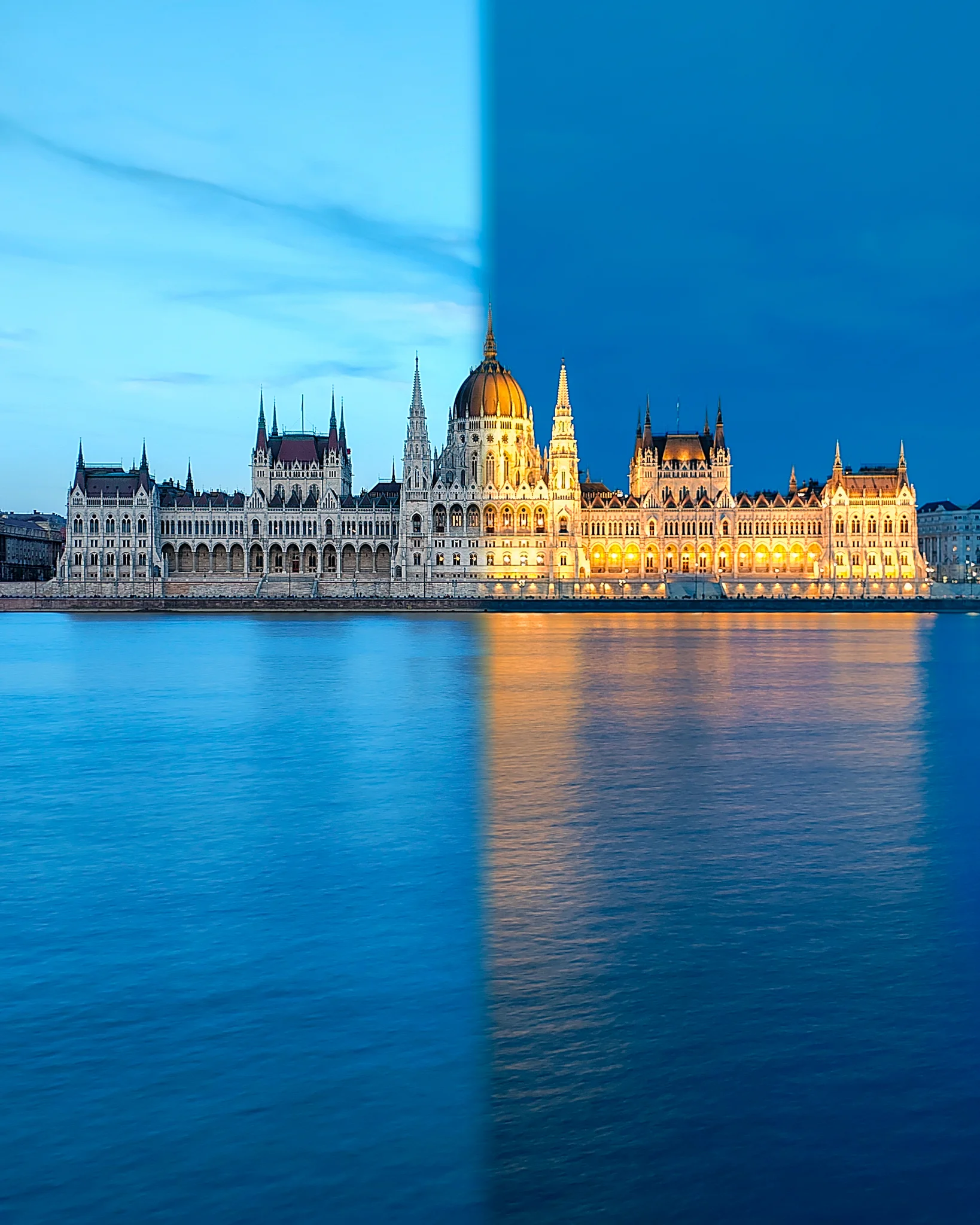
Long exposure
The Parliament Building is one of Budapest's most famous landmarks, and this is the most popular composition from the opposite bank of the Danube. Since it's a symmetrical building, it's best to take the photo from directly in the middle, facing it. I arrived at the location during the golden hour, set up my phone on a tripod, and stayed until blue hour, when the building was fully illuminated. I used the Long Exposure feature on Motorola Edge 50 Pro, which takes multiple shots and blends them together to create long exposure photographs, beautifully blurring the water.

Reflection
St. Stephen's Basilica is Budapest's largest, classical and neo-renaissance style church. It was completed in 1905 after 54 years of planning. Its height, like that of the Parliament Building, is 96 meters, making it the tallest building in Budapest. Fortunately, in the early hours of the morning, there are few people lingering around, and the reflections of one of the restaurants' windows offer an interesting composition.

The Symbol of Budapest
The Széchenyi Chain Bridge (often simply called Chain Bridge) offers numerous compositions, and at sunrise, it's quiet enough to capture it without vehicles and people, especially if we catch beautiful morning lights, creating a spectacular backdrop for Budapest's most famous symbol.
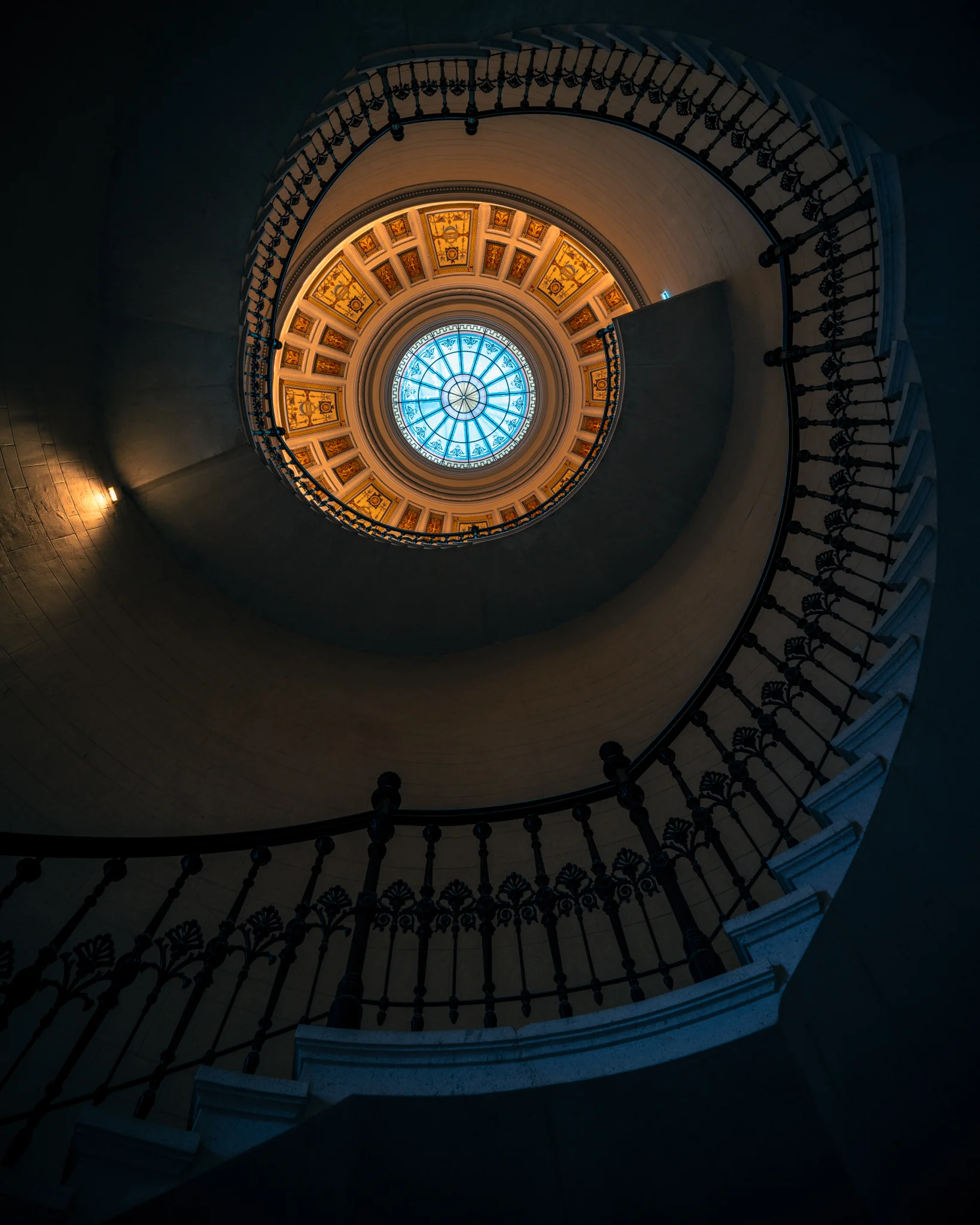
Spiral
One of Budapest's most elegant spiral staircases is the Staircase Pavilion in the Várkert Bazaar. The gracefully ascending suspended staircase fills the available interior space perfectly, and through the glass roof of the staircase hall, there is plenty of natural light during the day. As shown in the next photo, it's also worth laying the phone on the floor (with the camera facing upwards) with a timer.
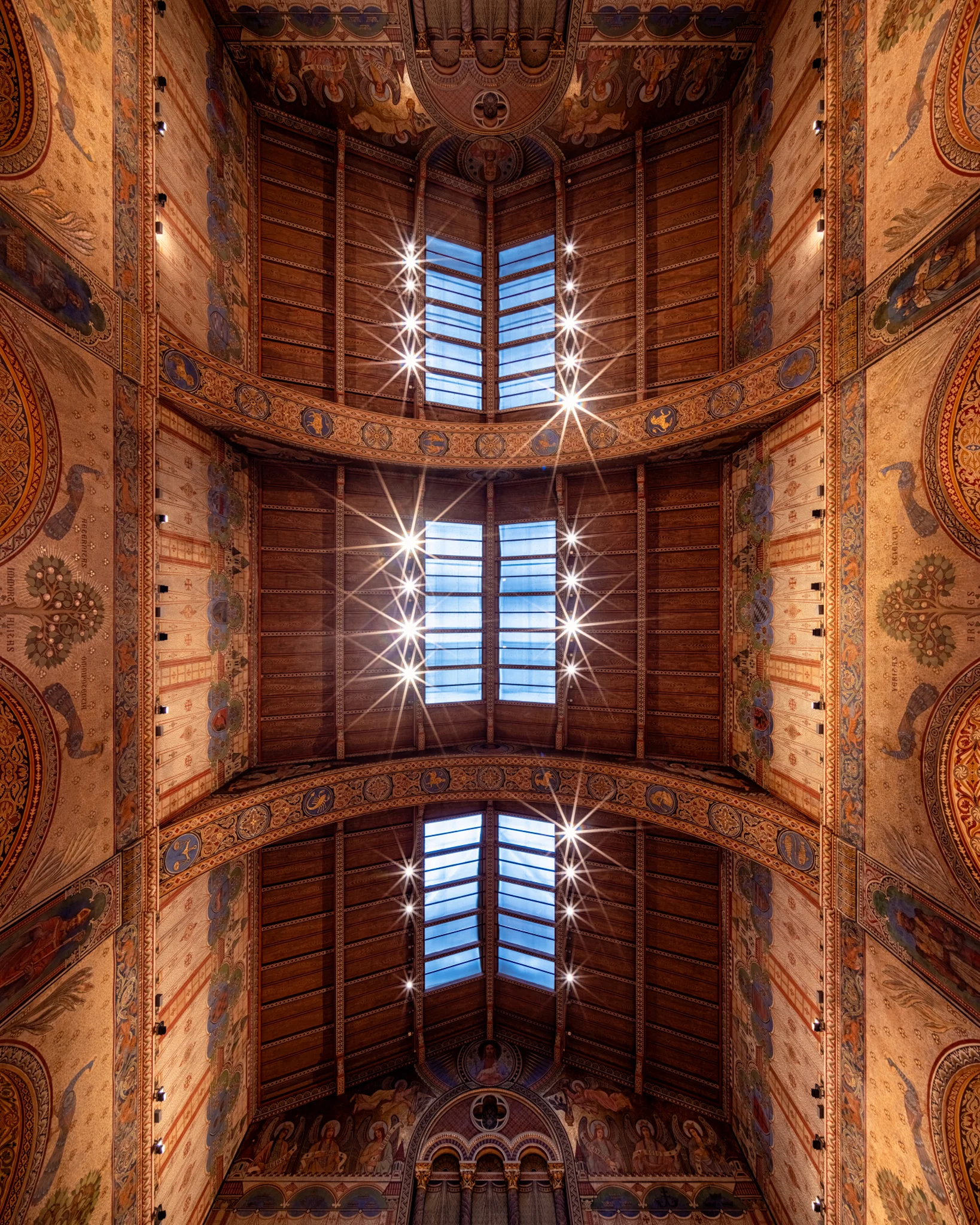
Ultra-wide shot
With the ultra-wide camera of the Motorola Edge 50 Pro (120-degree field of view), it's easy to take so-called "lookup" photos, where you simply place the phone on the floor, set a 3 or 10-second timer (to be a bit further away from the shot), and the HDR function blends the images from multiple shots to achieve the desired dynamic range.

Spectacle of light
The Buda Castle Tunnel provides an excellent frame for the Chain Bridge, and in April, the Sun rises directly opposite the Tunnel, creating a magnificent spectacle of light. The enhanced AI image processing of the Motorola Edge 50 Pro improves the dynamic range, ensuring that darker areas, such as those facing the Sun, do not lose detail, the entire image remains detailed, and the bright sky does not get blown out, avoiding overexposure.
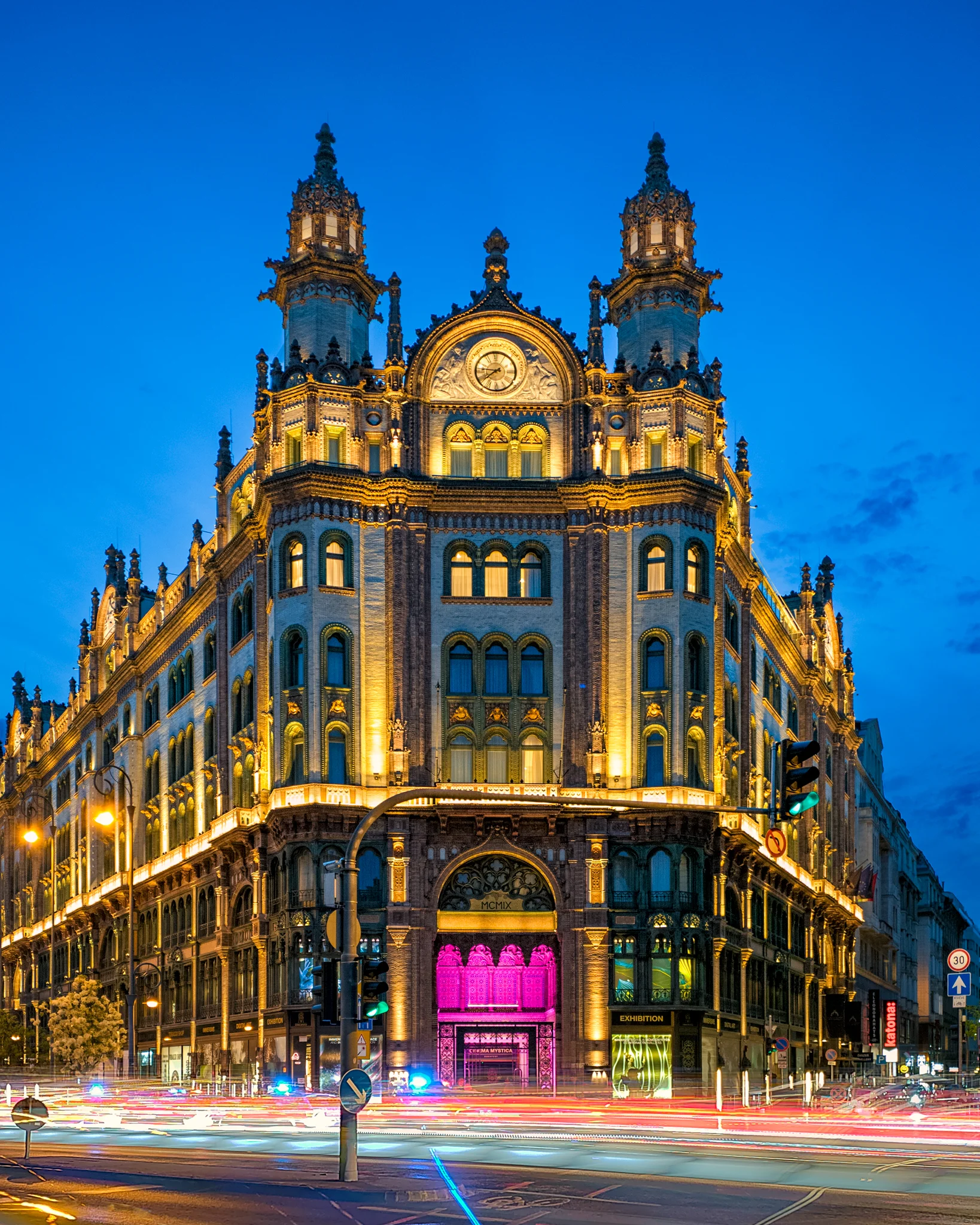
Rear lights
The Paris Court Budapest is the only surviving shopping arcade from the early 20th century, and it was one of Hungary's first modern shopping centers. The impressive building, blending Moorish and Gothic styles, faces heavy traffic day and night, and I wanted to capture this movement during the evening hours. With the Motorola Edge 50 Pro Long Exposure function, you can transform the front and rear lights of moving vehicles into colorful streaks using long exposure.
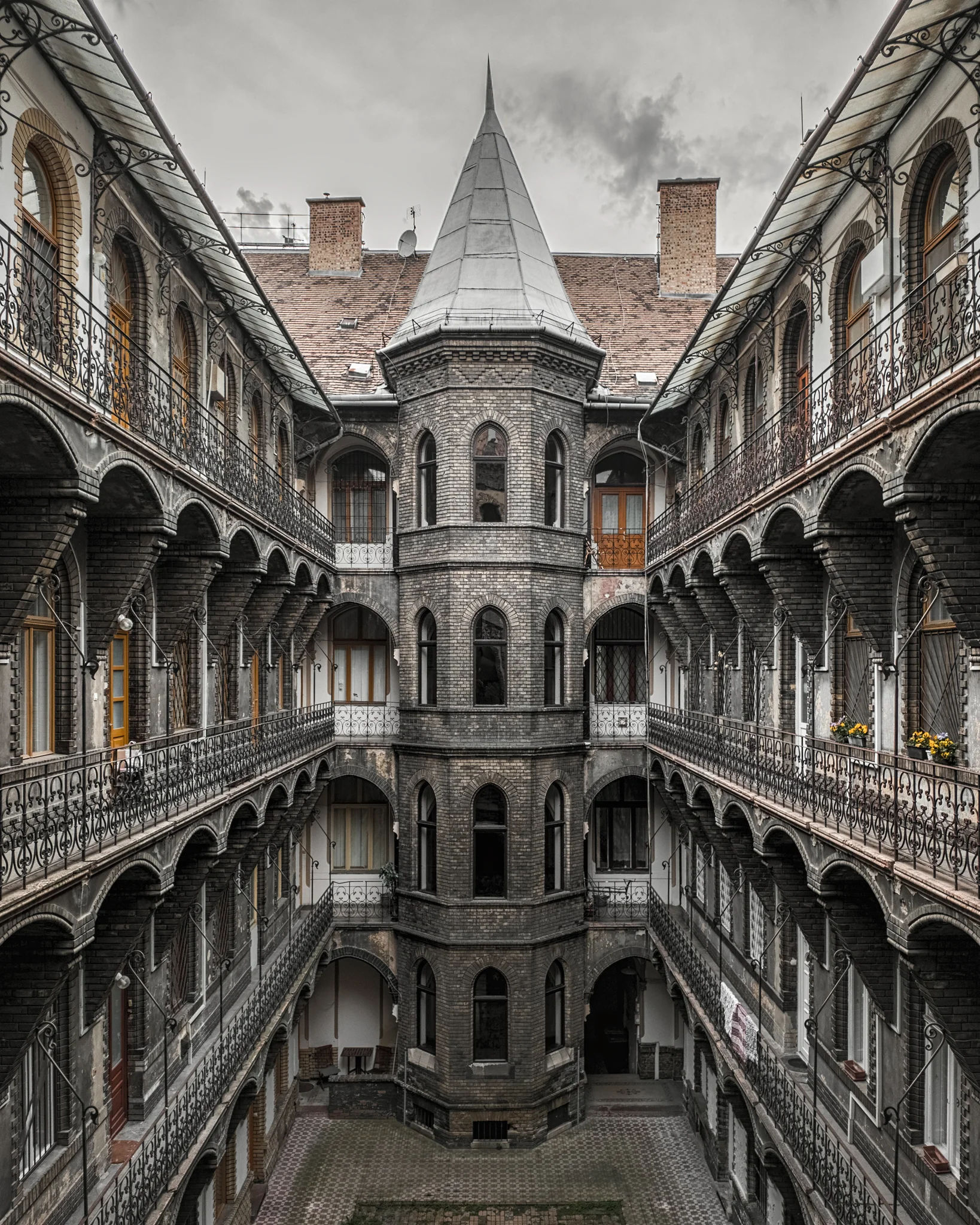
Neo-gothic
The old residential buildings of Budapest bear witness to the architecture of past centuries. One such building, constructed in 1894 in the neo-Gothic style, I photographed its courtyard on a gray, gloomy afternoon. The somber, melancholic weather suits it well, as does the symmetry.
Contemporary lights
Last year, modern LED light strings replaced the 1180 lamps providing the renovated Chain Bridge with decorative lighting. The modern lighting allows the bridge to shine in various colors. A few minutes after sunset, the lights come on; on several evenings, I captured this moment from various locations around Budapest's iconic landmarks.
Look-up photos
With the ultra-wide camera of the Motorola Edge 50 Pro (120-degree field of view), it's a breeze to capture so-called "lookup" photos. Simply place the phone on the floor, set a 3 or 10-second timer (to position ourselves a bit further away from the shot), and the HDR function blends images from multiple shots to produce the desired result with optimal light dynamics. (see photo no. 7.)
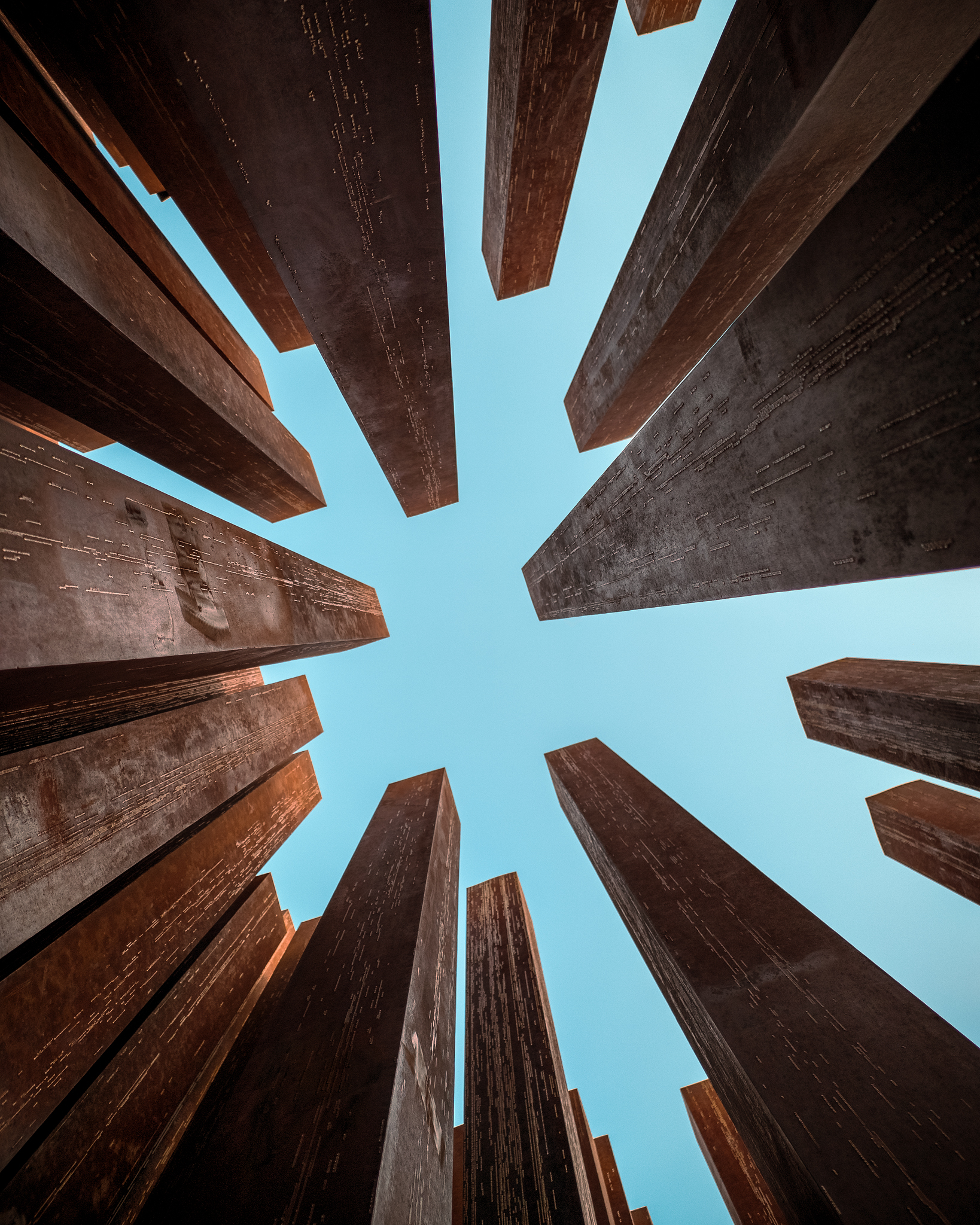
1956 Memorial
The 1956 Memorial is located on the edge of City Park and consists of metal columns converging in a wedge shape, which from a frog's-eye perspective might appear as skyscrapers towering into the sky. Use your phone's ultra-wide camera and set a timer for a few seconds (so you have time to step out of the frame): and just like that, you have the perfect "lookup photo."
Shot on edge 50 ultra.
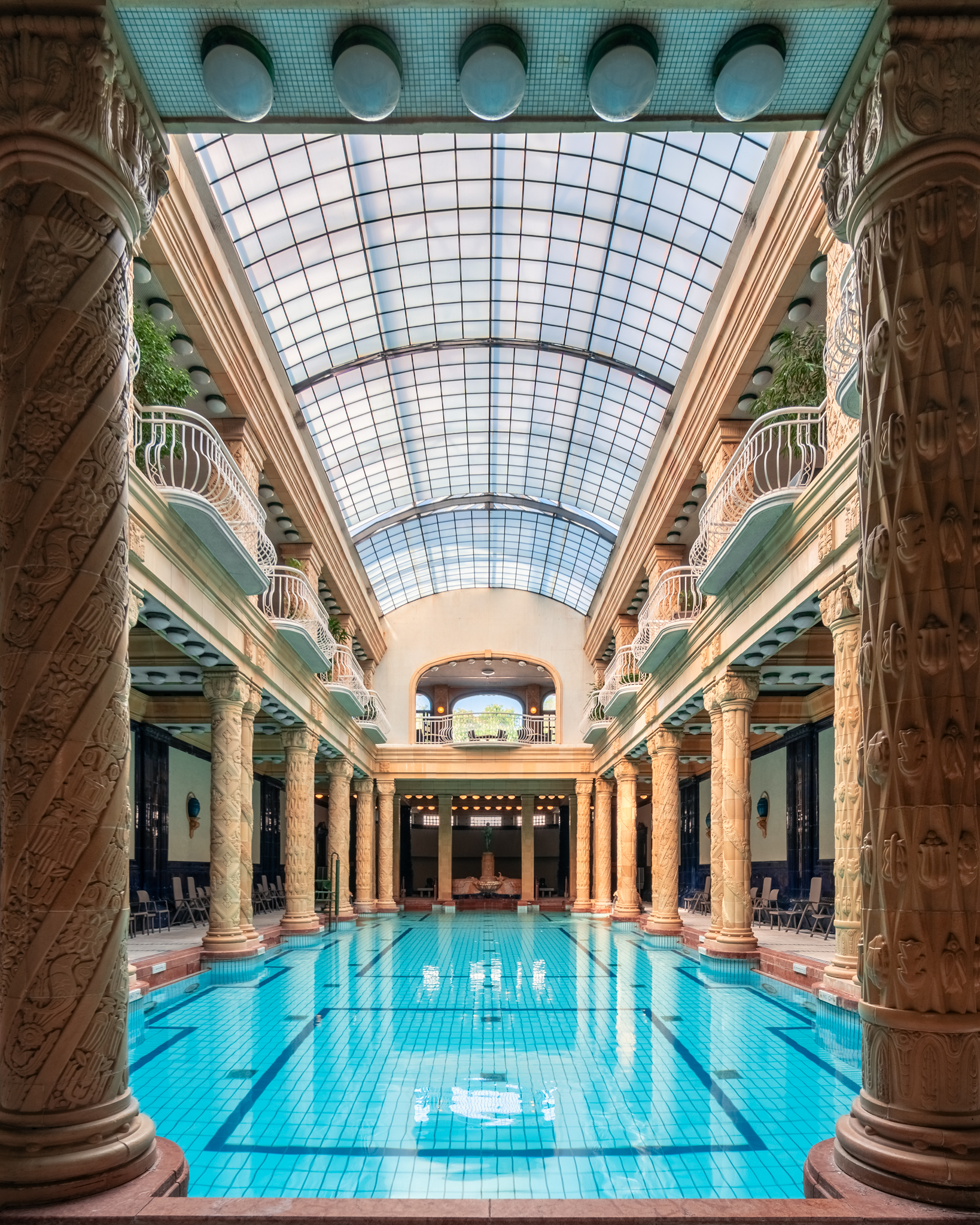
Gellért Thermal Bath
The Gellért Thermal Bath is one of Budapest's renowned—and in my opinion, most beautiful—thermal baths. Its building is a prominent example of Art Nouveau in Hungary. Capturing it without guests is not easy, as it gets crowded right after opening. Fortunately, I had the opportunity to take a few photos and videos without visitors. The ultra-wide camera of the Motorola Edge 50 Ultra was very helpful here, and there are plenty of symmetrical spaces to be found in the building.
Shot on edge 50 ultra.
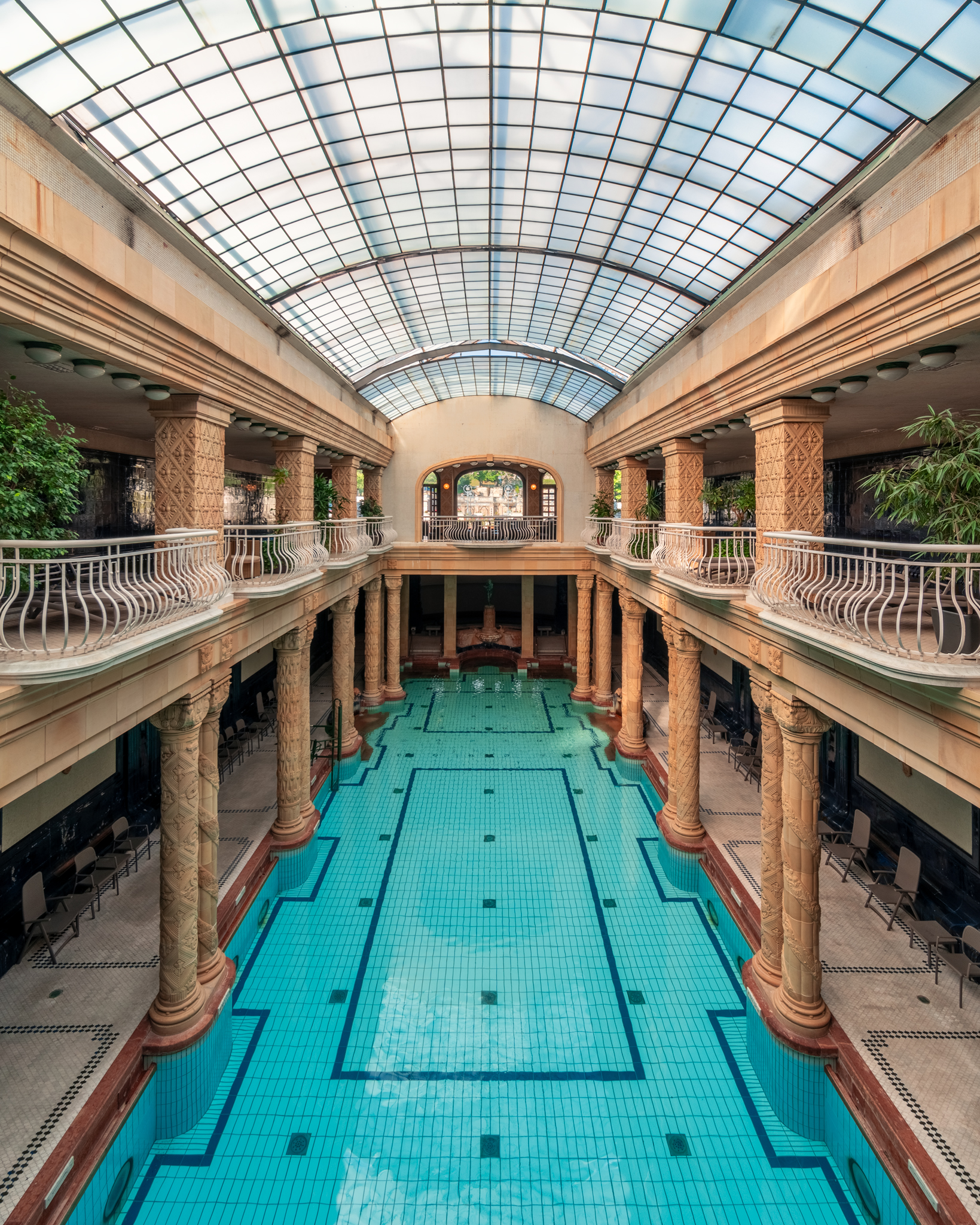
Gellért Thermal Bath
The Gellért Thermal Bath is one of Budapest's renowned—and in my opinion, most beautiful—thermal baths. Its building is a prominent example of Art Nouveau in Hungary. Capturing it without guests is not easy, as it gets crowded right after opening. Fortunately, I had the opportunity to take a few photos and videos without visitors. The ultra-wide camera of the Motorola Edge 50 Ultra was very helpful here, and there are plenty of symmetrical spaces to be found in the building.
Shot on edge 50 ultra.
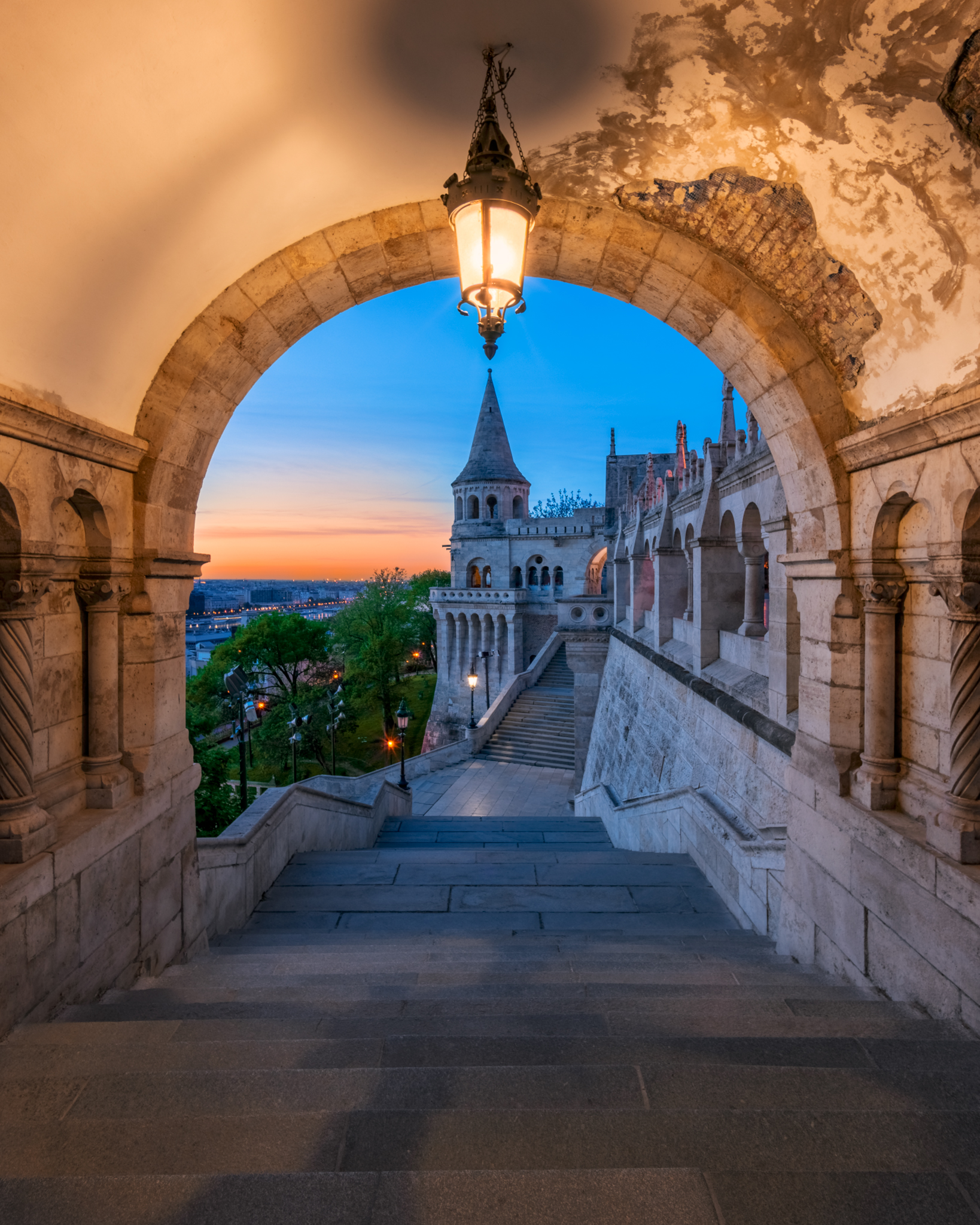
Fisherman's Bastion
The Fisherman's Bastion is one of Budapest's most famous landmarks. It is also not easy to photograph without people walking into the frame; your best chance is in the early morning hours, when the lighting is also more beautiful. The location offers numerous compositional possibilities. In this photo, I captured one of the staircases in the dawn light, positioning myself so that the lamp aligns with and almost touches the peak of the opposite bastion in the picture.
Shot on edge 50 ultra.

Metropolitan Szabó Ervin Library's Central Library
Since 1931, one of Budapest's most beautiful buildings, the Wenckheim Palace, originally built as an aristocratic private residence, has been home to the Metropolitan Szabó Ervin Library's Central Library. The various reading rooms provide excellent photo opportunities in this masterpiece of neobaroque palace architecture. With the Motorola Edge 50 Ultra’s excellent noise reduction, it is suitable for handheld photos even in lower light conditions (though for perfect results, we should place the phone on a tripod or secure it somehow and use a longer exposure time at ISO 100).
Shot on edge 50 ultra.
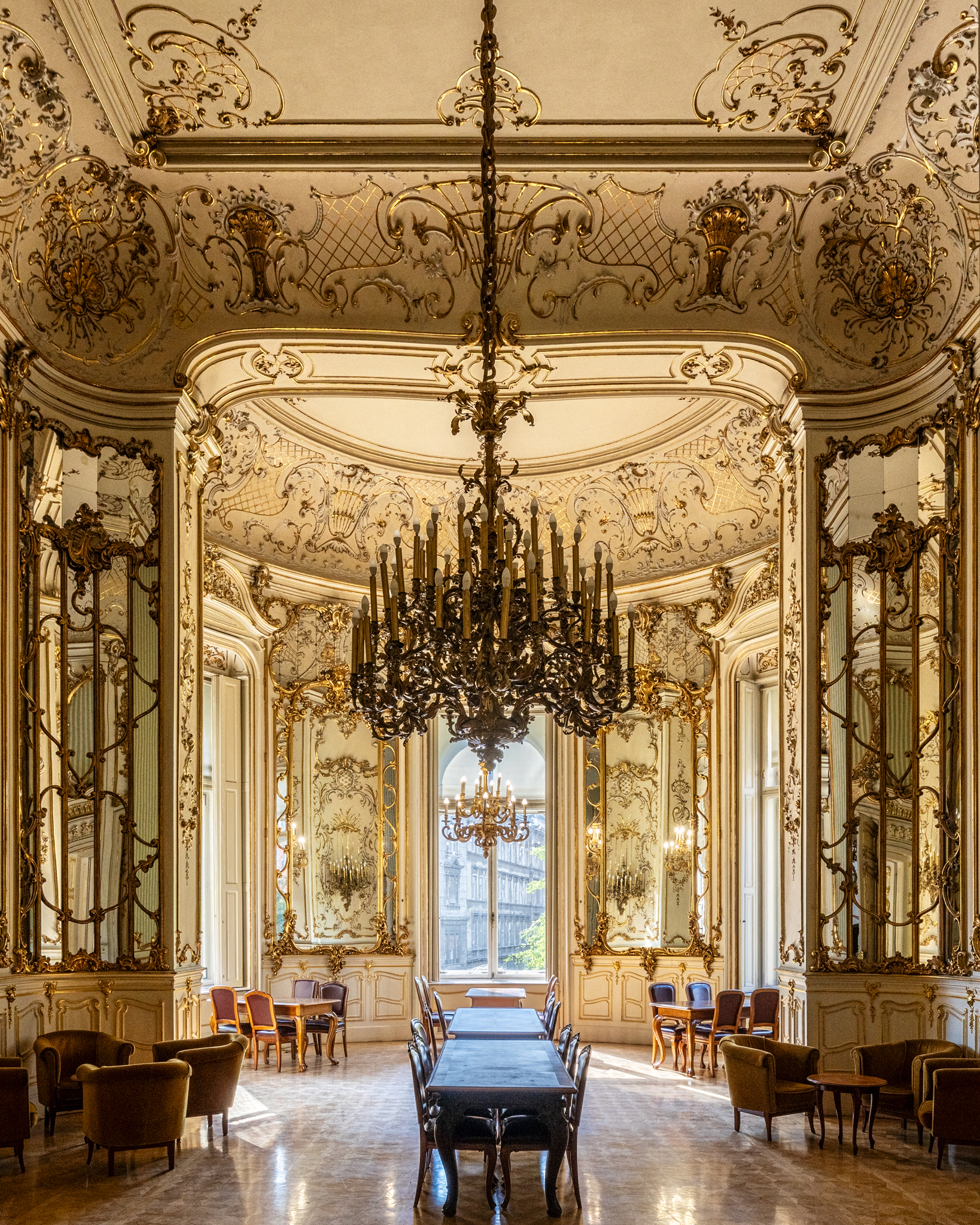
Metropolitan Szabó Ervin Library's Central Library
Since 1931, one of Budapest's most beautiful buildings, the Wenckheim Palace, originally built as an aristocratic private residence, has been home to the Metropolitan Szabó Ervin Library's Central Library. The various reading rooms provide excellent photo opportunities in this masterpiece of neobaroque palace architecture. With the Motorola Edge 50 Ultra’s excellent noise reduction, it is suitable for handheld photos even in lower light conditions (though for perfect results, we should place the phone on a tripod or secure it somehow and use a longer exposure time at ISO 100).
Shot on edge 50 ultra.

Margaret Bridge Long Exposure
As in one of my earlier photos, here I also used the Motorola Edge 50 Ultra's Long Exposure function, which transforms the lights of moving vehicles into "colorful streaks" through multiple exposures. You just need to place the phone on a tripod or rest it on a fixed point. From this location—the Margaret Bridge—several of Budapest's iconic landmarks can be seen simultaneously, including the Parliament, the Chain Bridge, and the Buda Castle.
Shot on edge 50 ultra.
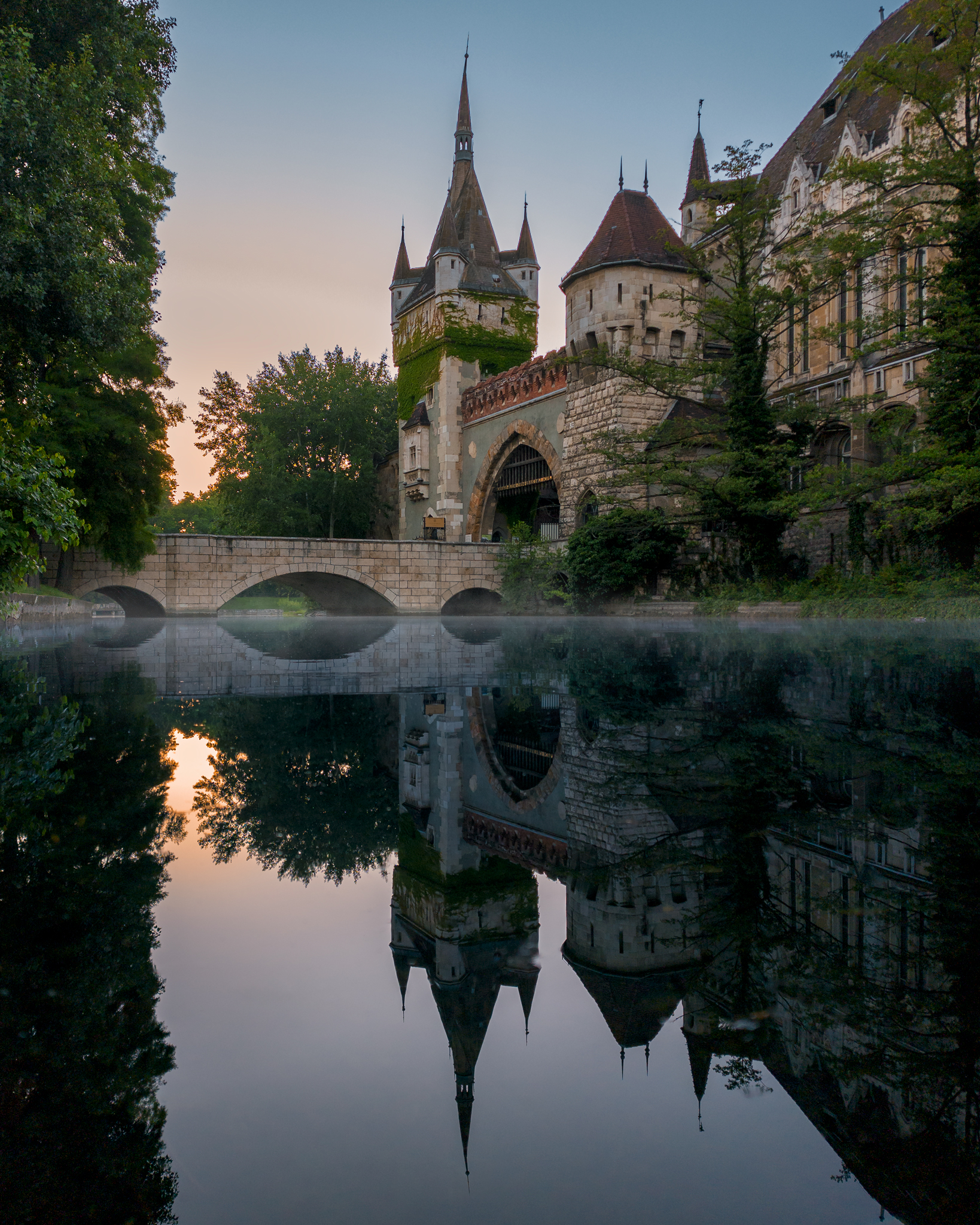
Vajdahunyad Castle
Vajdahunyad Castle was built in 1908 in City Park, modeled after a Transylvanian Gothic castle. The building stands on an artificial island surrounded by the City Park Lake, making the lake's reflective surface a popular subject for photography. On calm days, you don't even need to use long exposure; however, capturing a spectacular, exciting sky requires a bit of luck (unfortunately, I wasn't very fortunate with this, and usually, one has to return to the location multiple times for the perfect shot).
Shot on edge 50 ultra.
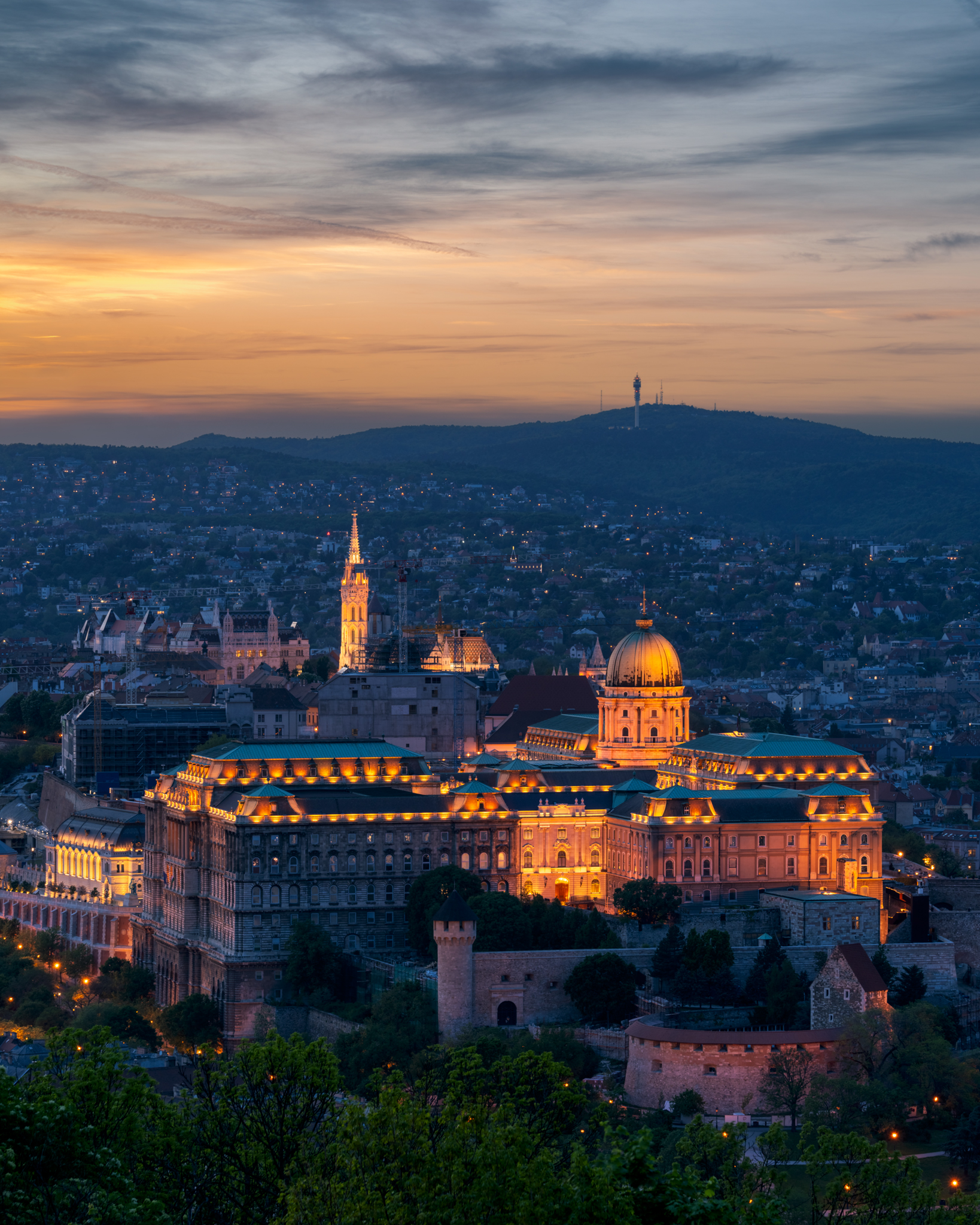
Buda Castle
Budapest's emblematic architectural masterpiece, the Buda Castle, began construction in the mid-1300s and continued until the late 1400s. The royal palace provides a popular blue hour photography subject when photographed from the Citadel. For this, it's worth using the telephoto lens of the Motorola Edge 50 Ultra, placing the mobile on a tripod, and capturing the image in RAW format to achieve the best possible quality.
Shot on edge 50 ultra.
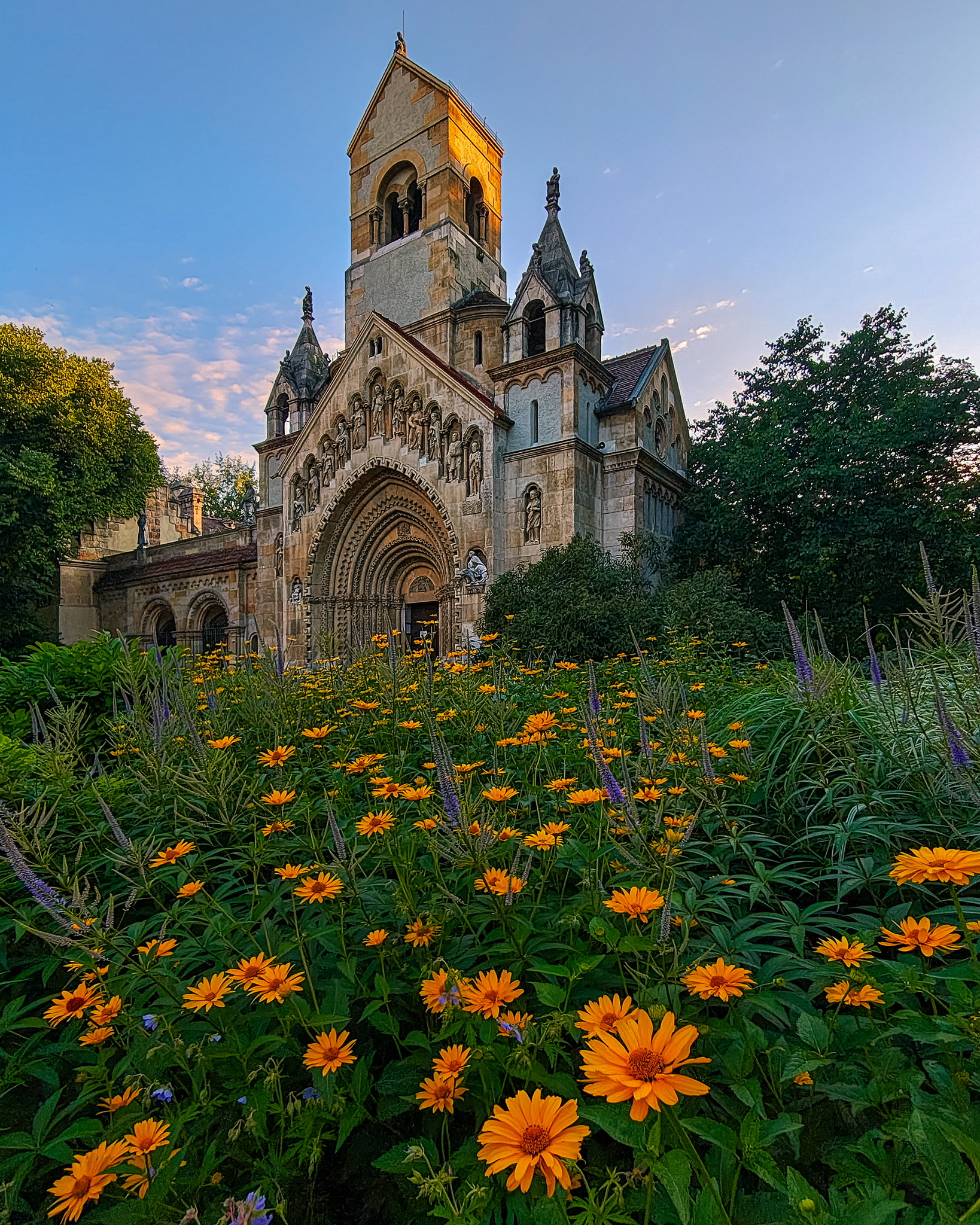
Ják Chapel
The Ják Chapel, officially known as the St. George's Chapel of Ják, is a beautiful Romanesque-style chapel located in Budapest's City Park. The building is an exact replica of the medieval church from Ják in Vas County and was constructed in 1896 as part of the Millennial Exhibition to showcase the historical development of Hungarian architecture. The chapel is one of the most significant examples of Romanesque architecture in Hungary, with intricately carved details and rich decorations making it a special sight for visitors. Today, the chapel remains a popular spot for walks in the City Park and serves as an important historical monument.
Shot on edge 50 ultra.
Gellért Thermal Bath
The Gellért Thermal Bath is one of Budapest's renowned—and in my opinion, most beautiful—thermal baths. Its building is a prominent example of Art Nouveau in Hungary. Capturing it without guests is not easy, as it gets crowded right after opening. Fortunately, I had the opportunity to take a few photos and videos without visitors. The ultra-wide camera of the Motorola Edge 50 Ultra was very helpful here, and there are plenty of symmetrical spaces to be found in the building.
Shot on edge 50 ultra.
1956 Memorial
The 1956 Memorial is located on the edge of City Park and consists of metal columns converging in a wedge shape, which from a frog's-eye perspective might appear as skyscrapers towering into the sky. Use your phone's ultra-wide camera and set a timer for a few seconds (so you have time to step out of the frame): and just like that, you have the perfect "lookup photo."
Shot on edge 50 ultra.


